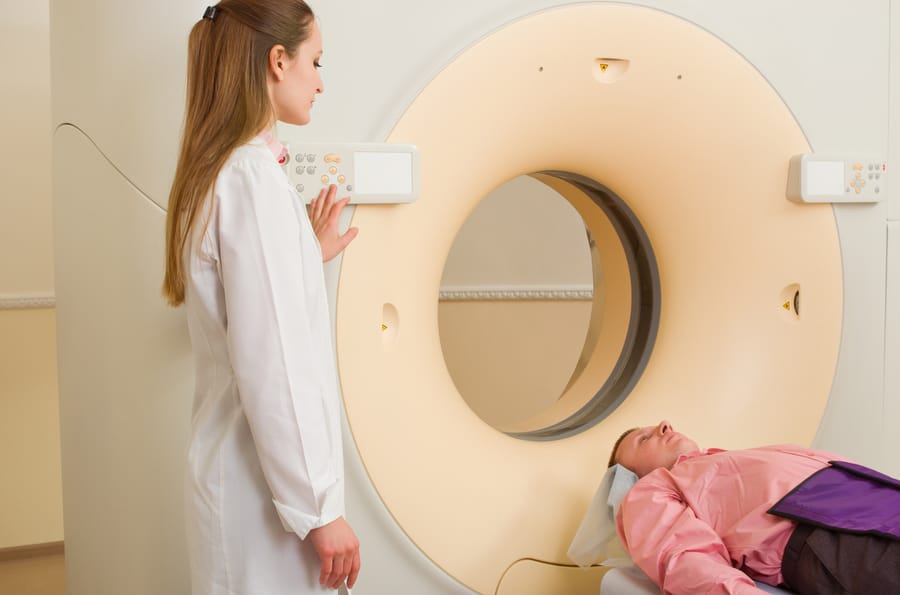
Radiation treatments for prostate cancer have been shown to be highly effective and potentially curative. Radiation therapy has also been shown to be an accepatable alternative to surgery. Short course radiation therapy may be beneficial for patients with low-risk prostate cancer in which duration of the treatment gets reduced by weeks providing similar quality of life caused by the long duration radiation therapy. This was reported by American Society for Radiation Oncology in its annual meeting in 2016. Prostate cancer is the second most common form of male malignancy in the western world with the localized form of the disease affecting majority of the patients.
In traditional radiation therapy for prostate cancer, a patient receives 40-45 doses of radiation for approximately 8-9 weeks whereas, in short course radiation therapy, the patient receives about 28 larger doses spanning for about 5-6 weeks.
Such type of radiation treatment given in larger doses less frequently is known as Hypofractionation radiation therapy. This therapy is given for a much shorter duration for a few days or weeks than the conventional radiation treatments. Moderate and extreme Hypofractionation radiation therapies are currently being explored depending upon the nature of cancer.
Radiation therapy for prostate cancer: A synopsis
- Conventional radiation treatment for localized prostate cancer is highly curative but treatments are given over a period of 2 months or more which can be highly inconvenient for the patients.
- Moderate Hypofractionation (1-month duration) and Extreme Hypofractionation (1-week duration) require high doses of radiation daily for fewer sessions.
- NCCN (National Comprehensive Cancer Network) guidelines for treating prostate cancer support moderate hypofractionation as a better alternative to conventional hypofractionation. It also permits considering extreme fractionation with suitable level of expertise.
- Advanced Image-guided radiation therapy with high-precision radiation delivery has opened up exploration avenues of delivering higher doses of radiation to further shorten the treatment duration.
Conventional lose dose radiation therapy regimen follows the basic radiobiological rationale. This process enables the normal tissues to better withstand the radiation doses and repair the DNA damage caused by the highly ionizing radiation. Extended radiation therapy gives sufficient recovery time for the harmed tissues of bowel and bladder thus minimizing the effects of radiation.
Assessing the sensitivity of tumor cells towards Hypofractionation:
Hypofractionation is not applicable for all tumors. Most of the tumors that are rapidly growing typically have high α/β values and are sensitive to overall doses and show minimum effect on fractionation. Prostate cancer has low α/β value forming a strong base for hypofractionation radiation therapy. Tumors with low α/β values are more sensitive to large fraction radiation doses but are resistant to small fraction doses.
Radiation Therapy regimens for localized prostate cancer:
|
Radiation Therapy regimen |
Number of Treatments | Dose per fraction (Gy) | Total Dose (Gy) | Duration of treatment in weeks |
|
Conventional |
38-45 |
1.8-2.0 |
75.8 -81.0 |
8-9 |
|
Moderate Hypofractionation |
15-30 |
2.4-3.4 |
57.0 -70.2 | 3-6 |
|
Extreme Hypofractionation |
4-7 | >5.0 | 38.0-50.0 |
1-2 |
Extreme Hypofractionation can be delivered only by high-precision technique of stereotactic body radiation therapy (SBRT) [Table Courtesy: https://gucasym.org]
Short Course radiation therapy (Hypofractionation) may offer a new standard of care in prostate cancer:
In the new study presented by ASCO at 2016 annual meeting after a median follow-up of 6 years reported the following observations. Total 1206 men with intermediate-risk prostate cancer were enrolled for the trial. Of them 608 men were randomized for Hypofractionated radiation at 60 Gy in 20 fractions for 5 days a week covering 4 weeks and 598 were randomized for Conventional Fractionation at 78 Gy in 39 fractions for 5 days a week covering more than 8 weeks.
- Acute and late grade 3 toxicities did not increase in the hypofractionated arm
- Survival rate and quality of life were similar to both hypofractionated and non-hypofractionated arm.
Moderate Hypofractionation is clinically as effective as conventional fractionation:
Another recent data from randomized trials have proved the non-inferiority of hypofractionation over traditional radiation therapy in terms of patient safety and disease control. More than 6000 patients considered for the randomized trial were given Conventional Fractionation 1.8-2.0 Gy per fraction or Moderate Hypofractionation 3.0-3.4 Gy per fraction.
Analyzing the 5-year efficacy outcome and toxicity profiles of the patients, it was reported that Moderate Hypofractionation was well tolerated with similar clinical effectiveness of conventional fractionation with other obvious practical advantages involving low cost and fewer clinic visits.
Short course radiation therapy with highly focused radiation techniques:
All study reports with moderate hypofractionation have established the optimal tolerability profiles compared to the conventional hypofractionation. These results again conform to the biological assumption that low α/β ratio of prostate cancer is responsible for better sensitivity towards high dose radiation. This may further support the effectiveness of Extreme Hypofractionation involving higher doses of radiation and shorter treatment duration.
The safe delivery of Extreme Hypofractionation radiation regimes demands the application of high-precision irradiation techniques with targeted high dose delivery minimizing the effects on surrounding healthy critical structures.
Modern SBRT (Stereotactic Body Radiation Therapy) treatments like the combination of IGRT and IMRT/VMAT enable targeted delivery of a higher dose of radiation per fraction. Although more studies are required to confirm a better efficacy with SBRT, the available reports of patient experience post 5-year follow-up support this wide scope of SBRT in carefully chosen prostate cancer patients.

